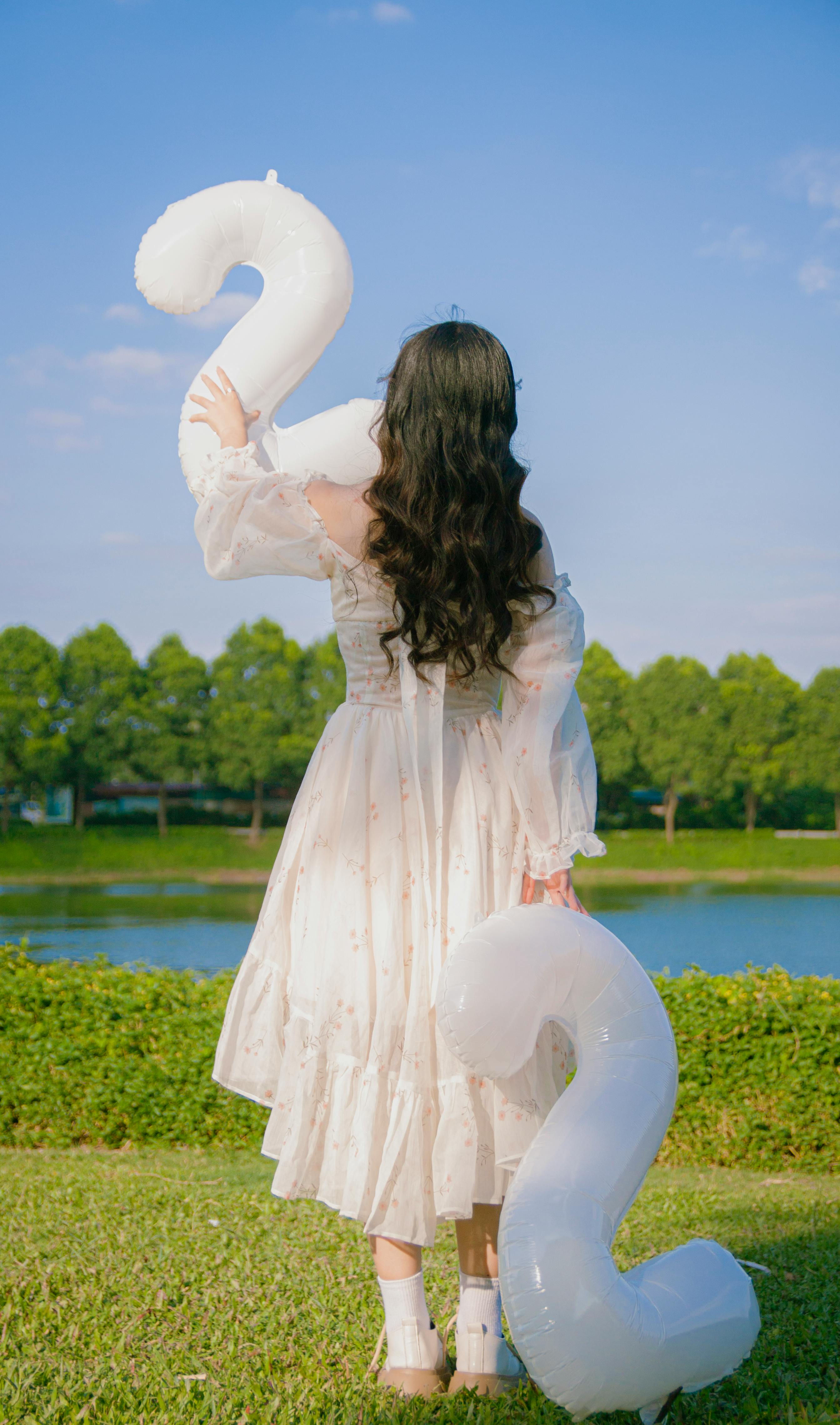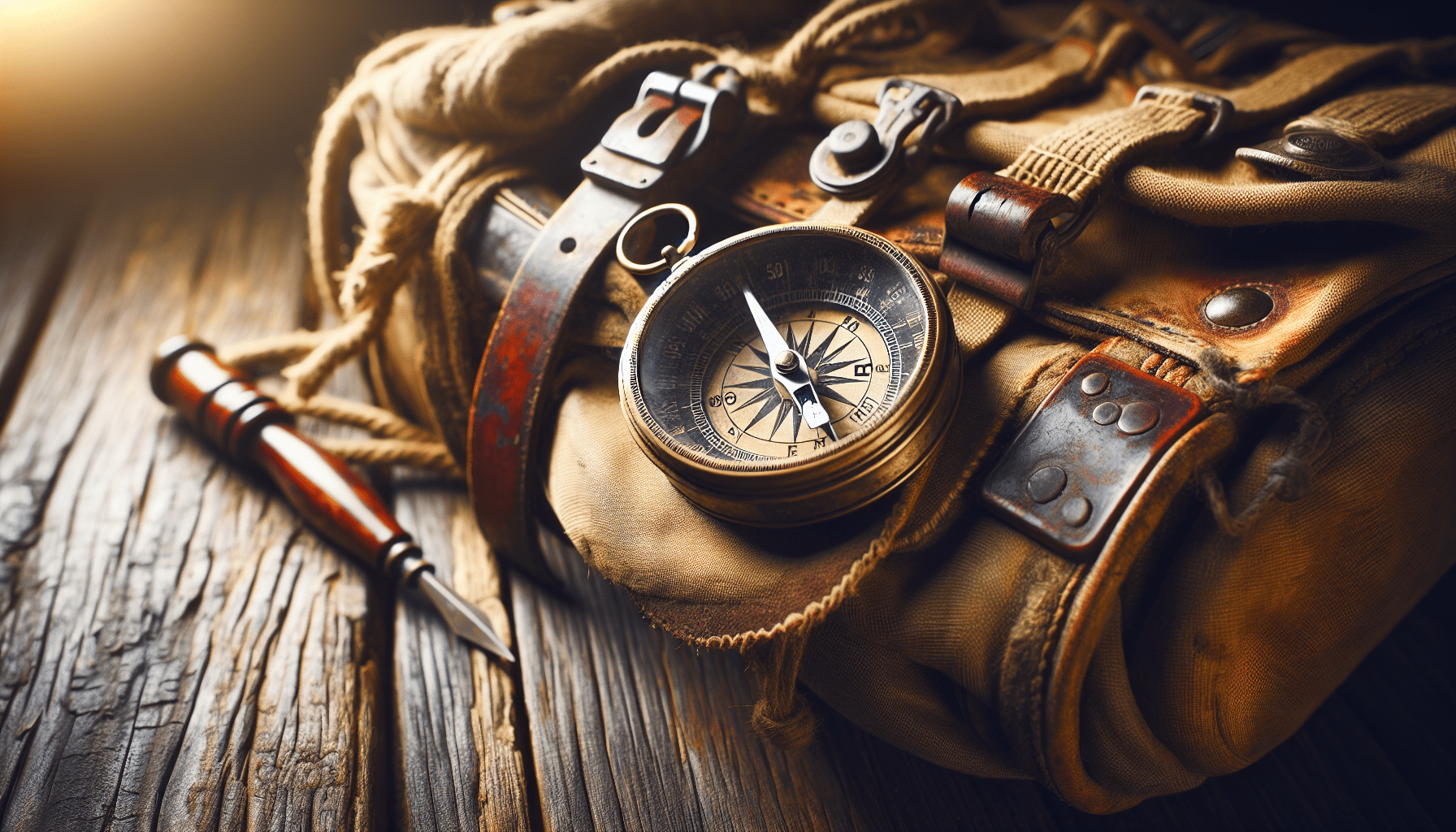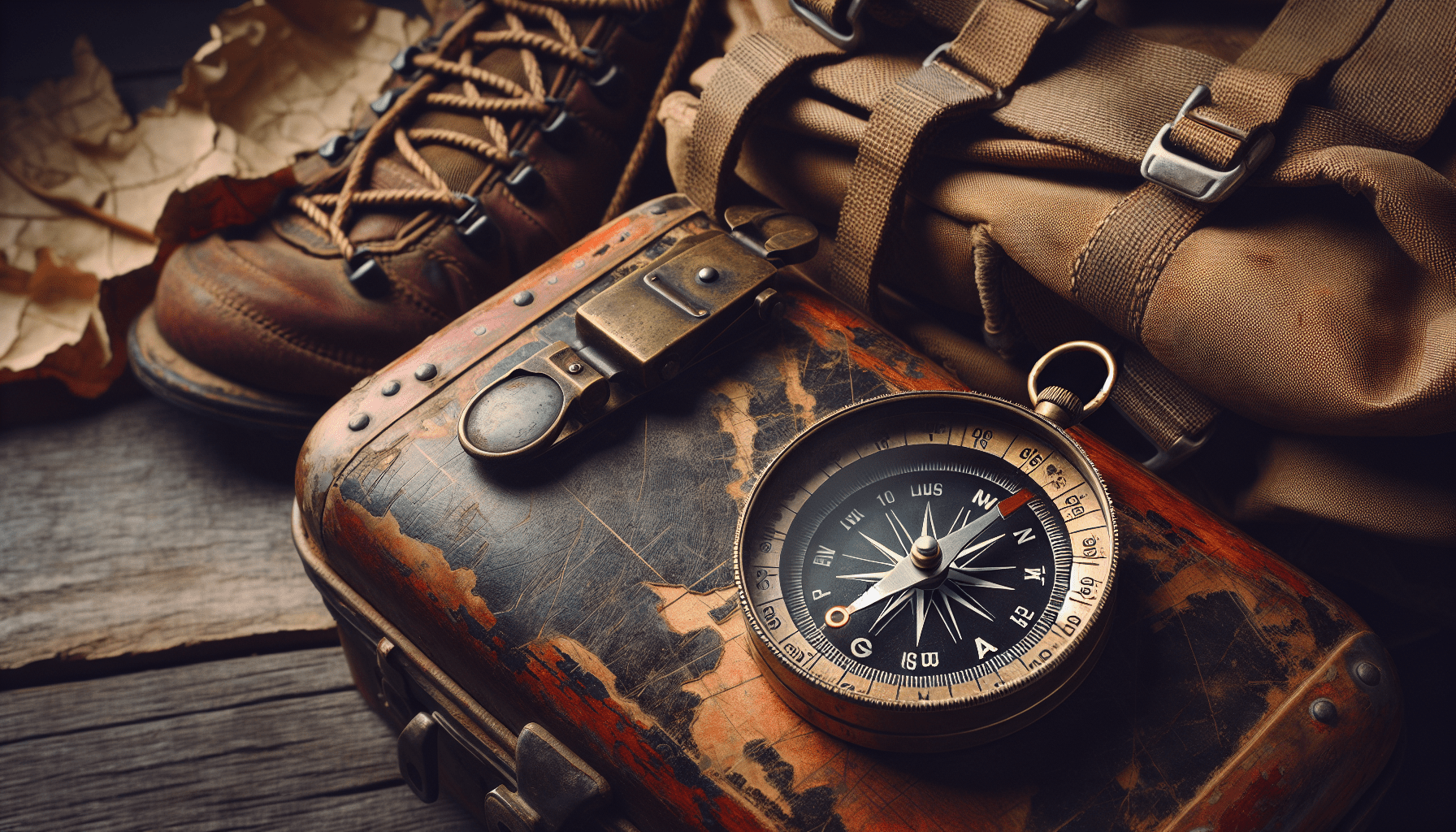Imagine finding an old backpack tucked away in the back of your grandparents’ closet or stumbling upon a worn-out camping stove in a dusty attic. These remnants of the past hold not just memories but also a hidden potential. In our fast-paced world of disposable items, there is a growing interest in reviving and restoring vintage outdoor gear. From iconic backpacks to trusty tents, people are discovering the joy and satisfaction of giving these old favorites a new lease on life. In this article, we will explore the reasons behind this revival and delve into the art of bringing vintage gear back to its former glory.

This image is property of images.pexels.com.
Introduction to vintage outdoor gear
Definition of vintage outdoor gear
Vintage outdoor gear refers to any equipment or gear that was manufactured several decades ago and is no longer in production. This can include items such as backpacks, tents, sleeping bags, hiking boots, and various other outdoor equipment. These pieces are often prized by outdoor enthusiasts and collectors not only for their historical value but also for their durability, unique designs, and nostalgia factor.
Popularity of vintage gear among outdoor enthusiasts
In recent years, there has been a resurgence in the popularity of vintage outdoor gear among outdoor enthusiasts. Many individuals are drawn to the craftsmanship and authenticity of these older pieces that were built to withstand the test of time. Vintage gear often has a certain charm and character that is difficult to find in modern counterparts. Furthermore, using vintage gear allows outdoor enthusiasts to connect with the history of outdoor recreational activities and the individuals who came before them.
Importance of preserving and restoring vintage outdoor gear
Preserving and restoring vintage outdoor gear is of paramount importance in order to ensure that these valuable pieces are not lost to time. These items offer a glimpse into the past and reflect the innovation and design of the era in which they were created. By preserving and restoring vintage gear, we can continue to appreciate the craftsmanship and ingenuity of our predecessors while also passing down these pieces to future generations of outdoor enthusiasts.
Identifying valuable vintage outdoor gear
Researching and understanding different eras of outdoor gear
To identify valuable vintage outdoor gear, it is essential to research and understand the different eras of outdoor gear production. Outdoor equipment has evolved over time, with distinct design features and materials associated with each era. By familiarizing yourself with the characteristics of different eras, you can better assess the value and desirability of vintage gear.
Recognizing well-known brands and iconic designs
Certain brands and iconic designs hold a significant amount of value in the vintage outdoor gear market. Brands such as The North Face, Patagonia, and Coleman are known for producing high-quality gear that has stood the test of time. Similarly, iconic designs like the Jansport backpacks or the A-frame tents by Eureka are highly sought after by collectors. Familiarizing yourself with these brands and designs can help in identifying valuable vintage gear.
Considering condition, rarity, and collectability
The condition, rarity, and collectability of vintage outdoor gear play a crucial role in determining its value. Items in excellent condition with minimal wear and tear are generally more desirable and valuable. Additionally, rare and hard-to-find pieces command higher prices in the market. Collectability also impacts the value, with some gear being highly sought after by collectors due to limited production or historical significance.
Evaluating the functionality and usability of vintage gear
While the value of vintage outdoor gear is often tied to its historical and collectible aspects, it is important to consider the functionality and usability of the gear as well. A well-preserved vintage sleeping bag may still be perfectly functional for camping trips, making it even more valuable to outdoor enthusiasts. By evaluating both the historical value and the usability of vintage gear, you can make informed decisions when acquiring and restoring these items.
Tools and materials for restoration
Essential tools for cleaning and repairing vintage gear
Restoring vintage outdoor gear requires a set of essential tools to properly clean and repair the items. These tools may include a set of screwdrivers, pliers, scissors, sewing needles, and various types of wrenches. Additionally, having a sewing machine, heat gun, or glue gun can be advantageous for certain repairs. Investing in a quality set of tools will ensure that you can effectively restore vintage gear and maintain its authenticity.
Choosing appropriate cleaning agents and solvents
When cleaning vintage gear, it is important to use appropriate cleaning agents and solvents to avoid damaging the materials. Different fabrics and materials require specific types of cleaning solutions. For example, mild detergent and warm water may be suitable for cleaning nylon or canvas gear, while leather may require specialty leather cleaners or conditioners. Carefully research and choose the right cleaning agents to safeguard the integrity of the vintage gear.
Understanding different types of adhesives and their applications
Adhesive plays a crucial role in repairing vintage outdoor gear. There are various types of adhesives available, each with its own strengths and applications. Some common adhesives used in gear restoration include epoxy, fabric glue, and contact cement. Understanding the properties and appropriate uses of these adhesives will ensure that repairs are done effectively, providing long-lasting results.
Selecting suitable fabrics, patches, and replacement parts
To restore vintage outdoor gear, selecting suitable fabrics, patches, and replacement parts is essential. Matching the original fabrics and colors as closely as possible will help maintain the authenticity of the gear. Additionally, having access to a variety of patches, zippers, buckles, and straps will allow for proper repairs without compromising the integrity of the vintage gear. Always strive for high-quality materials that will stand up to the demands of outdoor use.
Using specialty equipment for restoring specific gear types
In addition to the essential tools, there may be specialty equipment required to restore specific types of vintage outdoor gear. For example, restoring an old backpack may involve using a webbing cutter to trim and seal edges or a rivet press to attach new hardware. Be sure to research and invest in any specialty equipment needed for the restoration process to achieve the best results.
Cleaning vintage outdoor gear
Inspecting and assessing the dirt, stains, and odors
Before beginning the cleaning process, it is important to thoroughly inspect the vintage gear to identify any dirt, stains, or odors that may need attention. Assessing the condition of the gear will help determine the appropriate cleaning methods and products to use. Some stains or odors may require additional steps or treatment, depending on the severity and the material of the gear.
Safe cleaning methods for various materials (e.g., fabrics, leather)
Different materials require different cleaning methods to ensure their longevity. Fabric gear, such as backpacks and tents, can often be safely cleaned using mild detergent and warm water. It is important to avoid harsh chemicals or abrasive cleaning techniques that can damage the fabric or remove any protective coatings. Leather gear, on the other hand, may require specialty leather cleaners or conditioners to clean and maintain the material properly.
Removing mildew, mold, and other hazardous substances
Vintage gear is susceptible to mildew, mold, and other hazardous substances due to its age and exposure to outdoor environments. Safely removing these substances is crucial not only for the cleanliness of the gear but also for the health of the users. Using appropriate cleaning solutions and techniques, such as hydrogen peroxide or vinegar, can effectively eliminate mildew and mold without causing further damage to the vintage gear.
Preserving original color and patina during the cleaning process
When cleaning vintage outdoor gear, it is important to preserve the original color and patina as much as possible. Some gear may have patina or wear marks that contribute to its character and appeal. By using gentle cleaning methods and avoiding aggressive scrubbing or bleaching, you can maintain the unique qualities and visual appeal of the vintage gear.

This image is property of images.pexels.com.
Repairing damaged vintage outdoor gear
Identifying common issues such as tears, fraying, and broken components
Damaged vintage outdoor gear often exhibits common issues such as tears, fraying, and broken or missing components. It is important to identify these issues before starting the repair process. By thoroughly inspecting the gear, you can create a comprehensive plan of action and ensure that all repairs are addressed effectively.
Applying appropriate repair techniques for different materials
Different materials require different repair techniques to achieve optimal results. For fabric gear, repairing tears or fraying may involve using a sewing machine or hand-sewing with a strong thread. Leather gear may require patching or stitching with specialized leather needles and thread. Take the time to research and learn the appropriate repair techniques for the specific materials you are working with.
Restitching seams and reinforcing weak areas
Restitching seams and reinforcing weak areas are essential steps in restoring vintage outdoor gear. Over time, seams can come undone or weaken, compromising the functionality and integrity of the gear. By restitching these seams and reinforcing weak areas with additional stitching or patching, you can ensure that the gear will withstand future use and maintain its original strength.
Replacing zippers, buckles, straps, and other hardware
Vintage outdoor gear often requires replacements for broken or missing hardware, such as zippers, buckles, and straps. These components are vital for the functionality of the gear and should be replaced with matching or similar items to maintain the authenticity. It is important to choose high-quality replacements that are durable and capable of withstanding regular outdoor use.
Restoring functionality without compromising the gear’s authenticity
While it is important to restore the functionality of vintage outdoor gear, it is equally crucial to maintain its authenticity. Strive to repair and replace components in a way that does not detract from the overall aesthetics or value of the gear. Taking a conservative approach and using appropriate techniques will ensure that the gear remains true to its original form and purpose.
Restoring the aesthetics of vintage gear
Repairing and restoring faded or chipped paint on gear
Restoring the aesthetics of vintage gear often involves repairing and restoring faded or chipped paint. Paint touch-ups can be done using specialized paint or markers that match the original color of the gear. By carefully applying paint and blending it with the surrounding areas, you can bring new life to the vintage gear while maintaining its authenticity.
Refurbishing metal components to their original luster
Metal components of vintage gear, such as buckles, snaps, or metal frames, may lose their luster over time. Refurbishing these metal components involves removing any corrosion or tarnish and polishing them to restore their original shine. This can be done using metal polishes or specialty cleaning agents designed for specific types of metal.
Applying protective coatings to prevent further deterioration
To prevent further deterioration of vintage gear, applying protective coatings can be beneficial. Depending on the material of the gear, this may involve applying waterproofing treatments, UV protectants, or specialized coatings designed for the specific material. These coatings will help safeguard the gear from the elements and prolong its lifespan.
Maintaining the visual appeal while preserving authenticity
When restoring the aesthetics of vintage outdoor gear, it is vital to strike a balance between maintaining the visual appeal and preserving the gear’s authenticity. While it can be tempting to take creative liberties or modernize the gear, it is essential to respect the original design and materials. Focus on preserving and enhancing the vintage look and feel, allowing the gear to maintain its historical significance.

This image is property of images.pexels.com.
Preserving and storing vintage outdoor gear
Creating suitable storage conditions to prevent damage
Preserving vintage outdoor gear involves creating suitable storage conditions to prevent damage. Gear should be stored in a dry, cool, and well-ventilated location to avoid the growth of mold or mildew. Ideal storage areas include closets, attics, or basements with controlled humidity levels and protection from extreme temperatures.
Using acid-free materials for packaging and storage
When packaging and storing vintage gear, it is crucial to use acid-free materials to prevent deterioration or discoloration. Acid-free boxes, tissue paper, and storage bags will help maintain the integrity of the gear over time. Avoid using plastic bags or other materials that can trap moisture, as this can lead to mold or mildew growth.
Maintaining proper ventilation and humidity levels
Proper ventilation and humidity levels are essential for the preservation of vintage outdoor gear. High humidity can promote mold growth and damage the gear, while excessively dry conditions can lead to cracking or degradation of materials. Consider using dehumidifiers or moisture-absorbing packets in storage areas to maintain optimal humidity levels.
Avoiding exposure to direct sunlight and extreme temperatures
Direct sunlight and extreme temperatures can cause irreversible damage to vintage outdoor gear. Prolonged exposure can lead to fading, brittleness, or warping of materials. To prevent these issues, store gear away from windows or areas prone to sunlight exposure. Additionally, avoid storing gear in areas with extreme temperatures, such as attics or garages.
Implementing regular inspection and maintenance routines
Regular inspection and maintenance routines are crucial for preserving vintage outdoor gear. Schedule regular check-ups to ensure that the gear remains in good condition and address any emerging issues promptly. Routine maintenance, such as cleaning, waxing, or reapplying protective coatings, will help extend the lifespan of the vintage gear and ensure its continued functionality.
Building a collection of vintage outdoor gear
Strategies for finding and acquiring vintage gear
Building a collection of vintage outdoor gear can be an exciting and rewarding endeavor. To find and acquire vintage gear, consider visiting thrift stores, antique shops, or flea markets. Online marketplaces and auction platforms can also be excellent resources for locating specific pieces. Networking with other enthusiasts, attending gear swap meets, or joining online communities dedicated to vintage gear can provide valuable connections and leads.
Building knowledge and expertise in specific gear categories
Building knowledge and expertise in specific gear categories is vital for developing a comprehensive collection. Focus on specific types of gear, such as backpacks, tents, or sleeping bags, and learn about the different brands, designs, and materials associated with each category. This specialized knowledge will not only help in identifying valuable pieces but will also allow you to appreciate the historical significance and craftsmanship of the gear.
Establishing connections with sellers, collectors, and experts
Establishing connections with sellers, collectors, and experts in the field of vintage gear can be invaluable for building a collection. Networking with individuals who share your passion can provide access to insider information, tips, and recommendations on where to find unique or rare pieces. Engaging with experts or seasoned collectors can offer insights into the market value, restoration techniques, and historical context of vintage gear.
Navigating online marketplaces and auction platforms
Online marketplaces and auction platforms offer a convenient and accessible way to find and acquire vintage outdoor gear. However, navigating these platforms can be overwhelming due to the vast selection and varying conditions of the listed items. Researching the sellers, thoroughly reviewing item descriptions and photos, and setting realistic budgets are essential steps when utilizing online marketplaces for vintage gear procurement.
Preserving the history and stories behind each piece of gear
Collecting vintage outdoor gear goes beyond simply acquiring physical objects; it is an opportunity to preserve stories and historical significance. Each piece of gear has a story to tell, whether it was used on memorable adventures or played a part in the evolution of outdoor recreation. Take the time to document and preserve these stories, either through written accounts, photographs, or oral histories. This adds depth and value to your collection and ensures that the legacy of vintage gear lives on.

Value and market for restored vintage outdoor gear
Understanding the demand for restored vintage gear
Restored vintage outdoor gear continues to gain popularity due to its unique appeal and historical significance. Outdoor enthusiasts and collectors alike appreciate the craftsmanship, durability, and nostalgia associated with vintage gear. The demand for restored vintage gear is driven by individuals seeking to connect with the past, experience the authenticity of older pieces, and relive the outdoor adventures of previous generations.
Factors influencing the value of restored vintage gear
The value of restored vintage gear is influenced by various factors, including rarity, condition, brand reputation, and market demand. Rare or limited-production items are typically more valuable due to their scarcity. Gear in excellent condition, with minimal wear and tear, commands higher prices as it is deemed more desirable. Items associated with renowned brands or iconic designs are also highly sought after. Ultimately, the value of restored vintage gear is determined by the willingness of collectors and outdoor enthusiasts to pay for these unique pieces.
Marketplaces and platforms for buying and selling restored gear
Several marketplaces and platforms cater to the buying and selling of restored vintage gear. Online platforms such as eBay, Etsy, and specialized outdoor gear forums enable individuals to connect with buyers and sellers globally. Additionally, gear swap meets, flea markets, and vintage gear conventions offer in-person opportunities to buy and trade restored vintage gear. Choosing the right platform depends on the specific gear being sold or acquired, as well as personal preferences for online or in-person transactions.
Appreciation for the craftsmanship and nostalgia of vintage gear
The appreciation for the craftsmanship and nostalgia associated with vintage gear continues to fuel the demand for restored pieces. Vintage gear often exhibits superior materials, attention to detail, and durability not commonly found in modern equivalents. This appreciation extends beyond functionality and dives into the sentimental value of owning and using a piece of outdoor gear with a rich history and personal stories attached.
Long-term investment potential and financial returns
Restored vintage outdoor gear can offer long-term investment potential and the possibility of financial returns. As the demand for vintage gear grows, the value of well-preserved and restored pieces tends to increase over time. Collectors and enthusiasts are willing to pay a premium for exceptional examples of vintage gear, providing the potential for financial gains if items are acquired wisely and stored properly.
Conclusion
Reflecting on the significance of preserving and restoring vintage outdoor gear, it becomes apparent that these pieces hold not only historical value but also provide a connection to the past and an appreciation for the craftsmanship of bygone eras. The popularity of vintage gear among outdoor enthusiasts continues to grow as more individuals recognize the unique qualities and charm that vintage gear brings to their outdoor experiences. By understanding the various aspects of vintage gear, such as identifying valuable pieces, the restoration process, and the market for restored gear, outdoor enthusiasts can contribute to the preservation of these timeless artifacts for future generations to enjoy. So go out there, explore the world of vintage gear, and continue the legacy of outdoor equipment that has stood the test of time.


